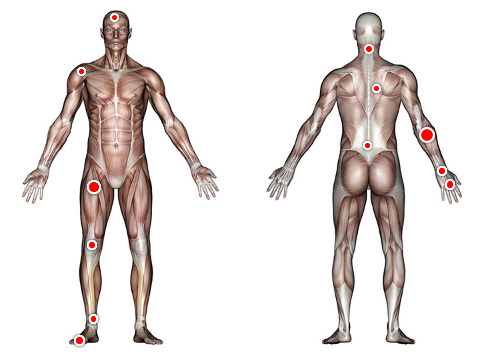Chiropractors and health practitioners use a variety of diagnostic tests to help identify the specific nature of musculoskeletal injury or condition. Orthopedic tests aid to identify specific conditions and diagnosis.
This section has a variety of common orthopedic tests, how they are performed, what they indicate when positive and the potential diagnosis as a result. Corresponding codes for ICD9 and ICD10 are displayed for each test.
They are listed by body region as well as alphabetic list below.
Please Choose a Location:

|
Valgus Stress Test
| Orthopedic Test | Valgus Stress Test |
| Method | The patient is placed into a supine position with the knees in complete extension. The examiner places one palm against the lateral aspect of the knee at the joint line of the side being tested and with the other hand the examiner grips the ankle pulling it laterally, thus opening the medial side of the joint. If this action causes no pain, then the examiner repeats it with the knee in 20-30 degrees of flexion, which puts the knee joint maximally vulnerable to a torsion stress. If either of these actions produces or exacerbates pain, below, above or at the joint line, then the test is considered positive, indicating a medial collateral ligament injury. |
| Diagnosis Indication | |
| ICD9 | |
| ICD10 | |
| Orthopedic Test | Valgus Stress Test |
| Method | The patient is placed into a supine position with the knees in complete extension. The examiner places one palm against the lateral aspect of the knee at the joint line of the side being tested and with the other hand the examiner grips the ankle pulling it laterally, thus opening the medial side of the joint. If this action causes no pain, then the examiner repeats it with the knee in 20-30 degrees of flexion, which puts the knee joint maximally vulnerable to a torsion stress. If either of these actions produces or exacerbates pain, below, above or at the joint line, then the test is considered positive, indicating a medial collateral ligament injury. |
| Diagnosis Indication | Sprain of medial collateral ligament of unspecified knee, initial encounter |
| ICD9 | 844.1 |
| ICD10 | S83.419A |
| Orthopedic Test | Valgus Stress Test |
| Method | Sign up to view results |
| Diagnosis Indication | |
| ICD10 |
| Orthopedic Test | Valgus Stress Test |
| Method | Sign up to view results |
| Diagnosis Indication | |
| ICD10 |
| Orthopedic Test | Valgus Stress Test |
| Method | Sign up to view results |
| Diagnosis Indication | |
| ICD10 |
| Orthopedic Test | Valgus Stress Test |
| Method | Sign up to view results |
| Diagnosis Indication | |
| ICD10 |
| Orthopedic Test | Valgus Stress Test |
| Method | Sign up to view results |
| Diagnosis Indication | |
| ICD10 |
| Orthopedic Test | Valgus Stress Test |
| Method | Sign up to view results |
| Diagnosis Indication | |
| ICD10 |
| Orthopedic Test | Valgus Stress Test |
| Method | Sign up to view results |
| Diagnosis Indication | |
| ICD10 |
| Orthopedic Test | Valgus Stress Test |
| Method | Sign up to view results |
| Diagnosis Indication | |
| ICD10 |
| Orthopedic Test | Valgus Stress Test |
| Method | Sign up to view results |
| Diagnosis Indication | |
| ICD10 |